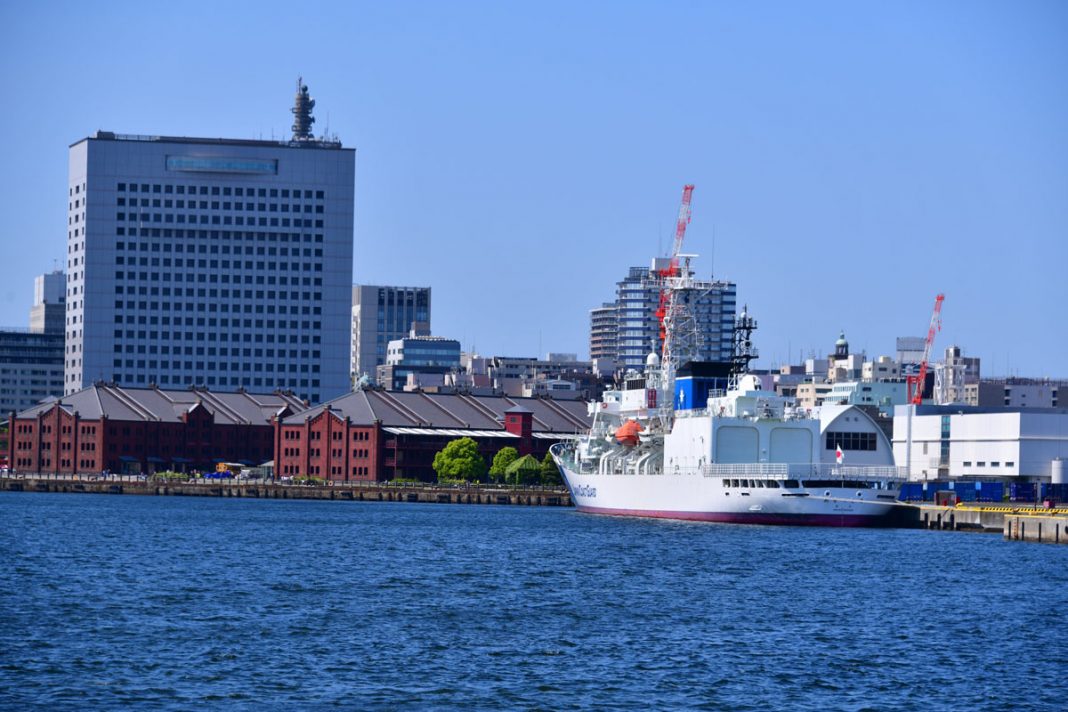| Anchorage Name | Location (Coordinates) | Area (km²) | Depth (m) | Bottom Type | Max Vessel DWT | Capacity | Primary Use | Restrictions & Safety Notes | Commercial Notes |
|---|---|---|---|---|---|---|---|---|---|
| Kawasaki Outer Anchorage | 35°30’00″N, 139°47’00″E | 2.5 | 15-20 | Mud/Sand (JHA Survey 2023) | 50,000 | 10 vessels | Waiting/Staging | 1. Strong currents (max 3 knots). 2. Typhoon evacuation zone per JCG Notice 15/2023. 3. Mandatory AIS and 1nm separation. |
1. Free anchorage (Port Ordinance §12). 2. >24h stays require Port Control approval (VHF Ch.12). |
| Kawasaki Inner Anchorage | 35°31’30″N, 139°45’00″E | 1.2 | 10-15 | Mud (ClassNK seabed survey 2022) | 30,000 | 6 vessels | Bunkering/Supplies | 1. Pilot compulsory (LOA >100m). 2. Prohibited: LNG/LPG carriers (IMO Class 2.1/2.3). 3. Max stay 48h. |
1. Bunkering requires pre-approved providers list (PAK Doc.2024-3). 2. Night operations restricted. |
| Tokyo Bay Emergency Anchorage (Shared) | 35°32’00″N, 139°50’00″E | 3.0 | 20-25 | Sand/Clay (JCG Seabed Chart TD-45) | 100,000 | 15 vessels | Emergency/Shelter | 1. JCG priority allocation. 2. No anchoring near submarine cable (marked on JP-1225). 3. Depth varies +2m during spring tides. |
1. No fees for distress cases (Maritime Safety Law Art.56). 2. Commercial use requires 72h notice. |
| Kawasaki Temporary Anchorage A | 35°29’45″N, 139°46’30″E | 0.8 | 12-18 | Sand (JHA 2024 update) | 20,000 | 4 vessels | Short-term holding | 1. NE monsoon (Oct-Mar) unsafe. 2. Prohibited for vessels carrying hazardous materials. |
1. First-come basis. 2. No cargo operations allowed. |
| Kawasaki Repair Anchorage | 35°30’45″N, 139°44’15″E | 1.5 | 8-12 | Clay | 15,000 | 3 vessels | Emergency repairs | 1. Tug escort required. 2. Must display Code Flag “A” by day/red light by night. |
1. Prior approval from Port Superintendent. 2. Maximum 7-day stay. |
Integrated Additional Information:
- Regulatory Framework
- Japan Port Regulations Act (Article 34-2) – Anchorage compliance
- IMO Resolution A.1150(32) – Emergency anchoring standards
- Kawasaki Port Bylaw No. 2024-1 (Anchorage fees exemption)
- Operational Procedures
- Pilot boarding: 35°30’15″N, 139°48’00″E (JCG Waypoint K-12)
- Tug requirements: 1 tug for 10,000-30,000 DWT, 2 tugs >30,000 DWT
- Anchoring prohibition zones: 500m radius around undersea cables (JCG Notice 5/2024)
- Environmental Compliance
- Zero discharge zone (Oil Record Book mandatory)
- Ballast water exchange: Minimum 200nm from shore per Japan Environment Agency
- Navigation Advisories
- VTS Coverage: 24/7 on VHF Ch.12 (Tokyo Bay VTS Sector 3)
- Typhoon alerts: JCG NAVTEX broadcasts (Area XI-509) + PAK SMS alerts
- Submarine cable areas: Marked by yellow buoys (Lat/Long in JP-1225 Annex 4)
Compliance Records:
- Operational Limits
- Maximum wind speed for anchoring: 25m/s (Beaufort 10)
- Current limits: 3 knots for vessels >20,000 DWT
Critical Notes for Mariners:
- Anchorage positions must be verified against JCG’s Real-Time AIS Monitoring System
- All coordinates use WGS-84 datum (JCG Standard NAV-88)
- Penalties for non-compliance: Up to ¥5M under Maritime Safety Law Art.108





